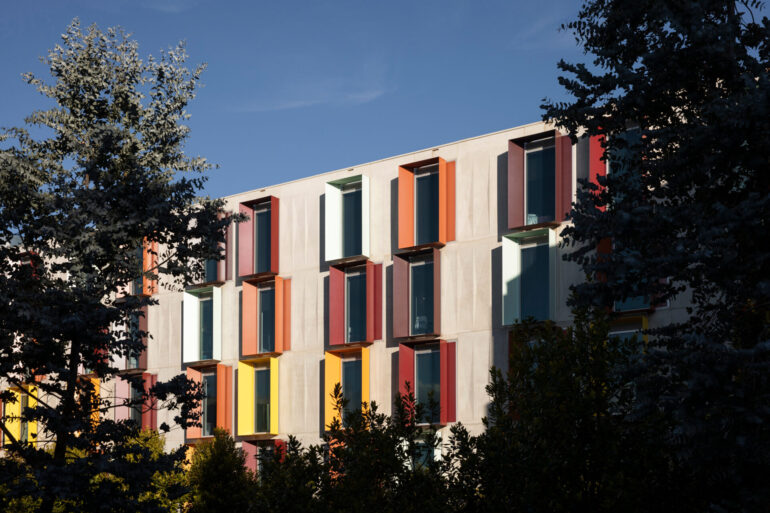Cushman & Wakefield’s latest UK Student Accommodation Report found there are still empty student beds in some cities, even though there are not enough beds for the number of students.
The national student-to-bed ratio stood at over two students for every available purpose-built student accommodation (PBSA) bed, but some areas had empty rooms due to falling international postgraduate demand and high rents.
In Sheffield, the demand pool dropped by 17.3% between 2022/23 and 2024/25.
The student-to-bed ratio was 1.21:1, down from 1.46:1, which led to PBSA rents falling by 5.5% this year.
The report also found that the gap between undersupply and empty beds was due to affordability issues for students.
University rents grew by 4.44% last year, nearly four times the private sector’s growth of 1.16%.
For only the third time in 12 years, lower quality rooms saw higher rent rises than top-end beds.
David Feeney, partner in Cushman & Wakefield’s UK Student Accommodation Team, said: “Unfilled beds is a concern. We project that postgraduate numbers have fallen by over 17% over the last two years, and whilst international student numbers are likely to stabilise after these initial visa shockwaves, we’re also seeing a rise in commuting students or those living at home because the cost of accommodation is simply too high for many.
“Meanwhile, stock at the same quality levels is competing for the PBSA student body, where en-suite cluster accommodation will lose out if the price point hits above affordability limits.
“Overall, in the post-covid world, many students are balancing lifestyle and value-for-money when considering accommodation location.”
Additionally, the report found the worst occupied en-suite developments this year charged 110% of the maximum Maintenance Loan, compared to 95% for the best occupied.
A record 23% of beds in England, including London, now cost more than the maximum Maintenance Loan.
In some areas, more than two-thirds of students can get a bed within their loan amount, but in others, only 12% can.
For providers, high rents were due to rising construction costs and pressures from the Building Safety Act.
Developers charged more to cover costs, but smaller profit margins meant less than 20% of new PBSA schemes were under construction.
Average viable development needed a weekly rent of around £265.
The report found only 18,200 new beds were delivered this year, a net increase of 10,000, much lower than before the pandemic.
Over five years, 88,000 new beds were built nationally, compared to 158,000 in the previous five years.
Despite these issues, the report showed strong investor interest in PBSA due to ongoing undersupply in many areas.
Even with demand growing at just 1% a year, nearly 750,000 students would still be without a PBSA bed, keeping the student-to-bed ratio at 1.90:1.
Feeney added: “Whilst markets don’t like uncertainty, investors still see huge opportunity in a number of undersupplied locations across the pricing spectrum, provided value-for-money and a good student experience is delivered. ‘Know your market’ is a truer sentiment now than ever before.
“Overall, the report signals that the Purpose Built Student Accommodation sector remains a robust, defensive asset class for investment, supported by strong demand and supply fundamentals.
“Looking forward, even under an extremely unlikely zero-demand growth scenario, student demand will continue to significantly outstrip supply by 2030.”
He said: “Needless to say, the UK is one of the top higher-educational destinations, with four institutions in the global top 10.”
Most of the 27 markets with new beds saw delivery focused in London, Nottingham and Leeds, making up almost half of all new supply.
Nottingham became the second biggest PBSA market in the UK, with a 35% rise in supply and 2,593 new beds in 2025/26.
London delivered 3,775 beds, while Leeds added 1,979 and Bristol 1,304.
Leeds saw big changes, with its demand pool dropping 7.2% from 2022/23 to 2024/25 and a 21.3% rise in PBSA supply.
Leeds had the highest delivery of new beds in five years, and 8,700 more are planned.
The report also noted that the Leeds PBSA market risks oversupply, especially with little diversity in pricing and quality.
Manchester remained strong due to a net loss of beds over five years and steady demand, despite higher rents. London went over its London Plan target of 3,500 new student beds for the first time.
Feeney said: “Viability issues and risk aversion mean developers are now focusing on a limited number of ‘premium’ locations.
“The potential for growth and weight of the development pipeline varies significantly from market to market.
“Our analysis shows that student-to-bed ratios (SBR) are set to fall in half of the 14 largest locations over coming years.”
Feeney added: “We have moved on from the arms race seen a few years ago of developing the best accommodation with the best amenity spaces, and the fear of not meeting that expectation.
“Today, our data indicates that value for money concerns mean quality, at least in the mid-market, is no longer the determining factor.”




